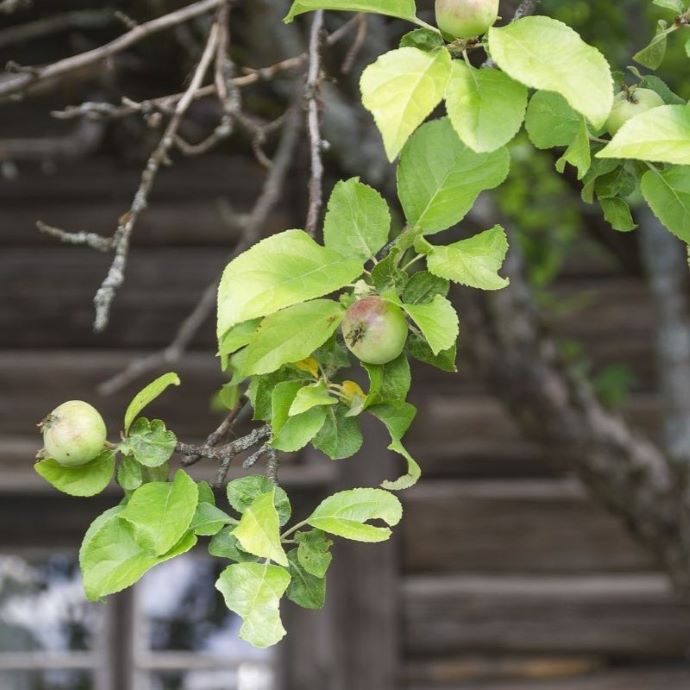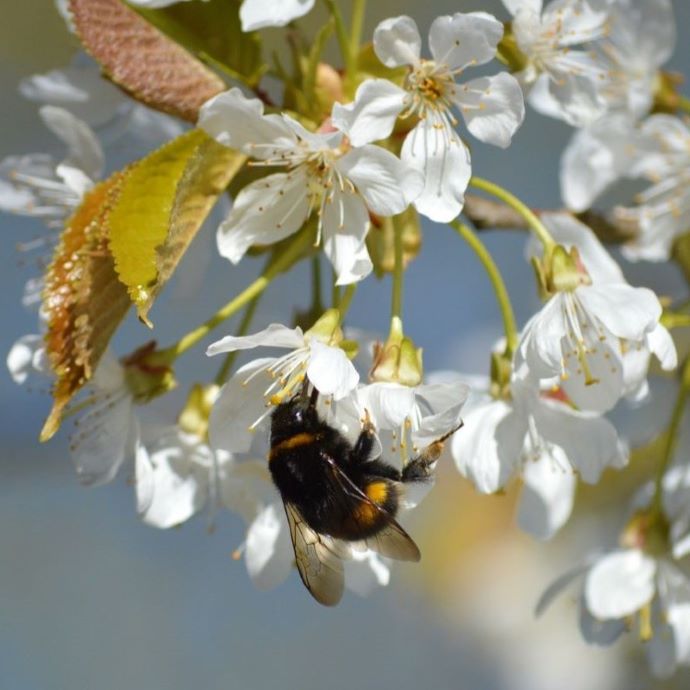Advice & Inspiration
What's the Best Wisteria to Grow?
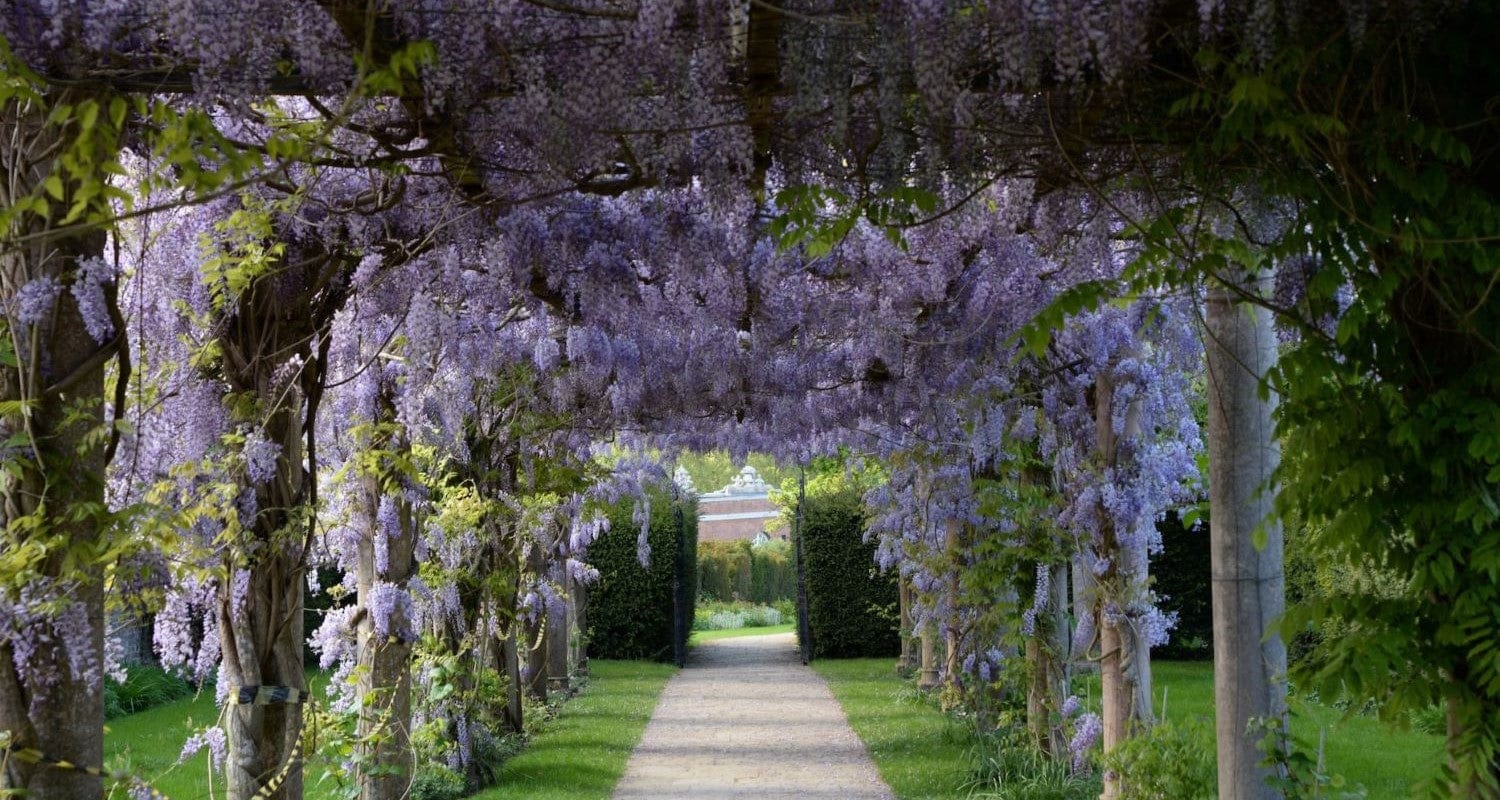
A wisteria plant is probably the most impressive climber you can grow. With its romantically twining leafy vines growing up to 10m high, it announces the start of sunnier days every May with an explosion of huge, cascading flower clusters in soft violets and blues, whites or pinks. But what’s the best wisteria for walls? Is there a type that’s best for your pergola? And are they easy to grow? Read on to find out more about choosing and growing your perfect wisteria.
Jump to:
- Chinese vs Japanese wisteria
- Other types of wisteria
- Best for walls
- Best for fences
- Best for pergolas
- Best for scent
- Best for pots
- Best for shade
- Earliest flowering
What's the difference between Chinese Wisteria and Japanese Wisteria?
The main difference between these two popular wisterias is the size of the flowers. The racemes (flower clusters) of Chinese Wisteria (Sinensis) are between 15-23cm and those of Japanese Wisteria (Floribunda) are larger at 30-45cm. Floribunda is also more fragrant, although Sinensis tends to flower sooner after planting, typically within four years. It flowers before the leaves appear, whereas Floribunda develops leaves and flowers at the same time.
There’s also a difference in the colours available - both Japanese and Chinese wisterias can be blue, violet or white, but only Japanese wisteria can be pink.
If you’re still not sure which type of wisteria you’re looking at, notice the way it twines around its support. Floribunda twines clockwise and Sinensis twines anticlockwise - you can thank me for that factoid when you win this week’s pub quiz.
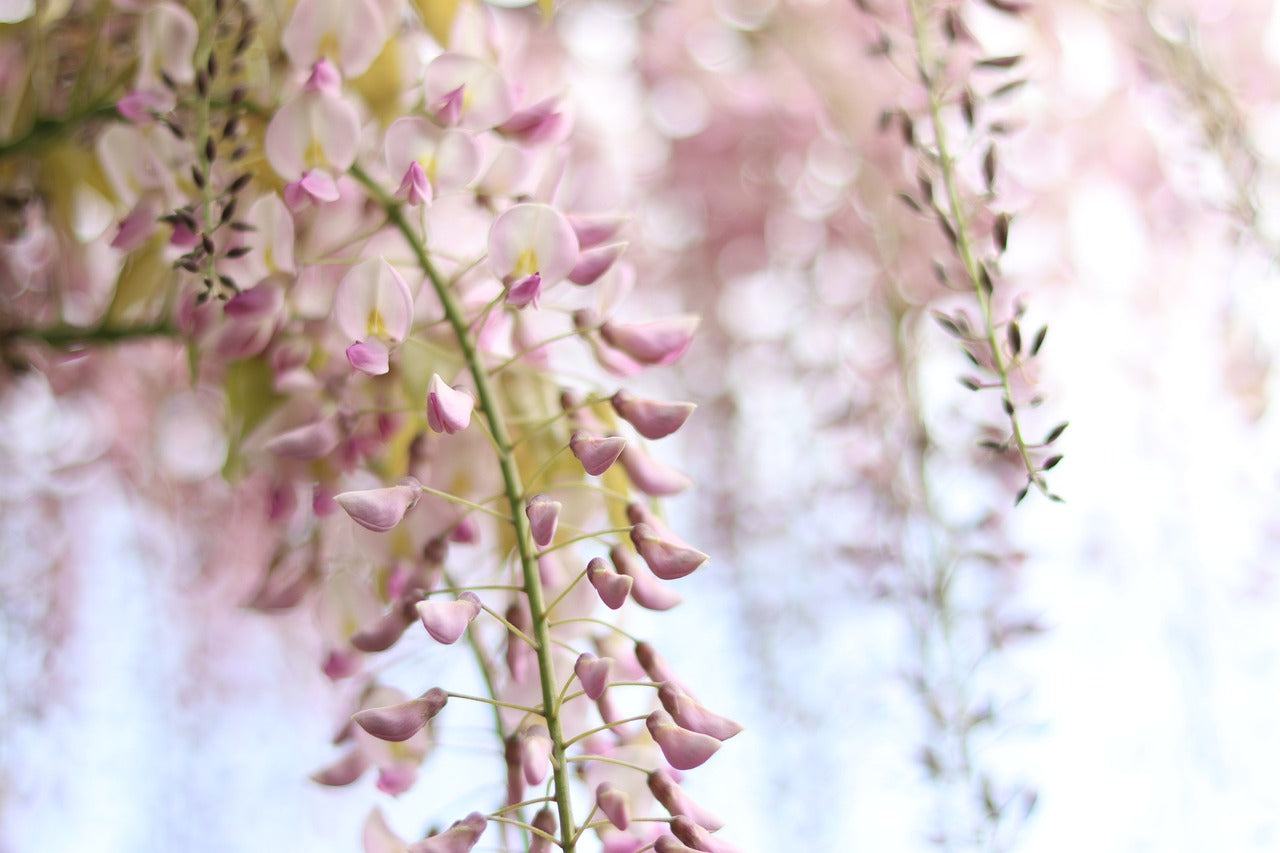
What other types of Wisteria are there?
Wisteria brachybotrys (Silky Wisteria)
This anticlockwise-twining wisteria originates from Japan and is strongly scented, its short racemes of flowers opening all at once in late spring. It’s a vigorous climber and its leaves are covered in silky hairs, hence the name.
Wisteria frutescens (American Wisteria)
This is the wisteria you’ll see in US TV shows about perfect suburban neighbourhoods that conceal a hotbed of crime. Not commonly grown on this side of the Atlantic, it has a mild scent and twines anticlockwise. Its foliage appears at the same time as its blue-violet flowers, often concealing them as thoroughly as a picket fence conceals a murder. (OK, I’ll stop now.)
What's the best Wisteria for walls?
The best wisteria for walls is Wisteria sinensis. This is because it has shorter racemes (flower clusters) than other kinds. You’ll need to provide some support for your plant, using either wires or a strong trellis fixed to the wall for it to climb. In terms of colour, violet is the classic look - try sinensis or sinensis Prolific - if you prefer a light, bright look, however, a white wisteria such as sinensis Alba is perfect. Make sure the wall you choose is South or West facing, so that your wisteria will get enough sun to bloom fully.
There are more tips on supporting your wisteria on a wall in this care guide.
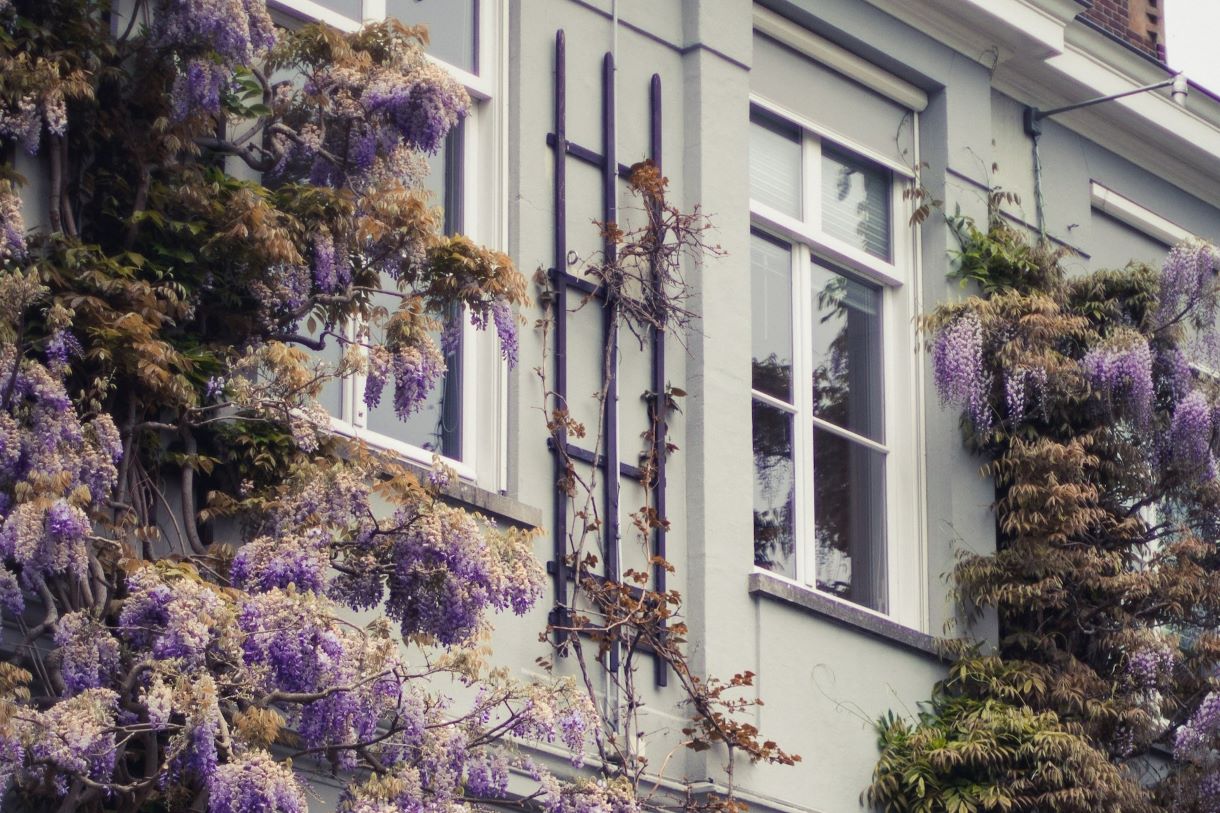
What's the best Wisteria for fences?
The best wisteria for fences depends on the sturdiness of your fence! For the average fence we would recommend a Wisteria frutescens or American wisteria, as these aren’t as heavy or fast growing as other types. However if your fence is strong enough, there’s no reason not to grow a Wisteria brachybotrys - the lush, silky foliage is great for covering a fence, and the smaller flower clusters will transform it into a beautiful feature every summer. Wisteria really is so versatile and can be pruned into any form you wish.
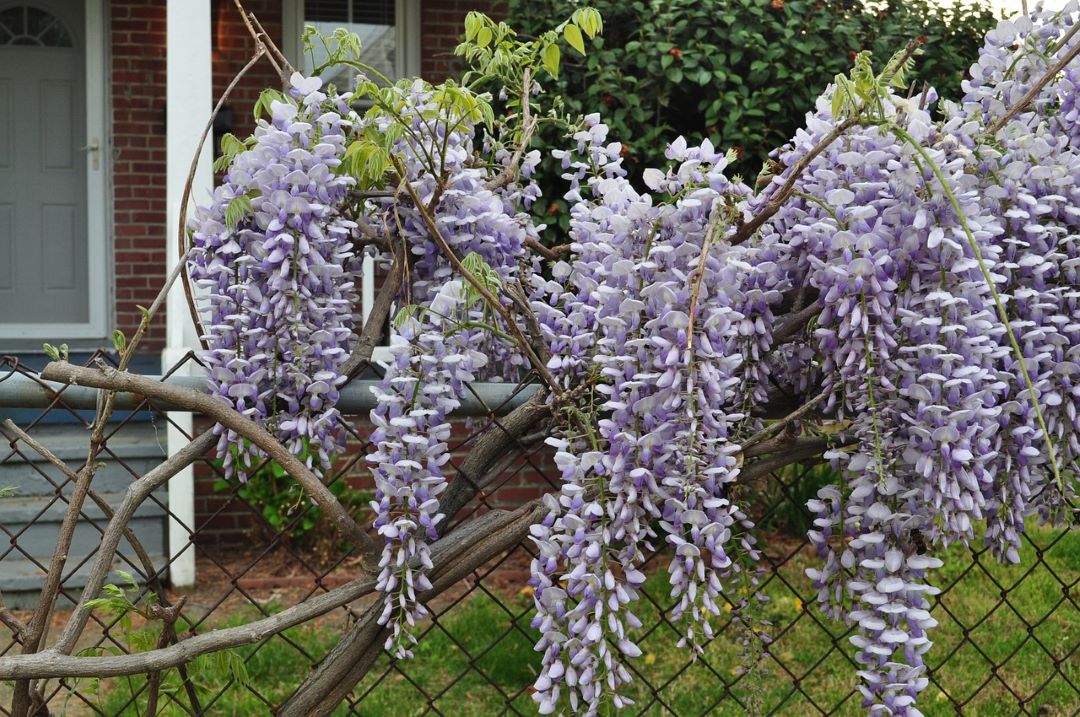
What's the best Wisteria for a pergola?
The best wisteria for pergolas is Japanese wisteria (Wisteria floribunda). The iconic look for a pergola wisteria is long clusters of flowers hanging down from the roof, scenting your outdoor seating area and providing instant atmosphere. Wisteria floribunda has the longest racemes, so will fit the bill perfectly. One of the best cultivars for pergolas is Macrobotrys - the flowers can grow up to a metre long! For a softer, romantic look, try pink and white Wisteria floribunda Rosea.

What's the best Wisteria for scent?
The most scented varieties are Wisteria brachybotrys 'Murasaki Kapitan' and Wisteria brachybotrys 'Shiro Kapitan', but all wisteria are scented. There’s some variation in the type and level of perfume, with two distinct scents classified as musky and sweet. The most fragrant kinds of wisteria are floribunda, sinensis and brachybotrys, with these cultivars being especially prized for their perfume: Shiro Kapitan (sweet), Kuchi Beni (musky) and Murasaki Kapitan (sweet).
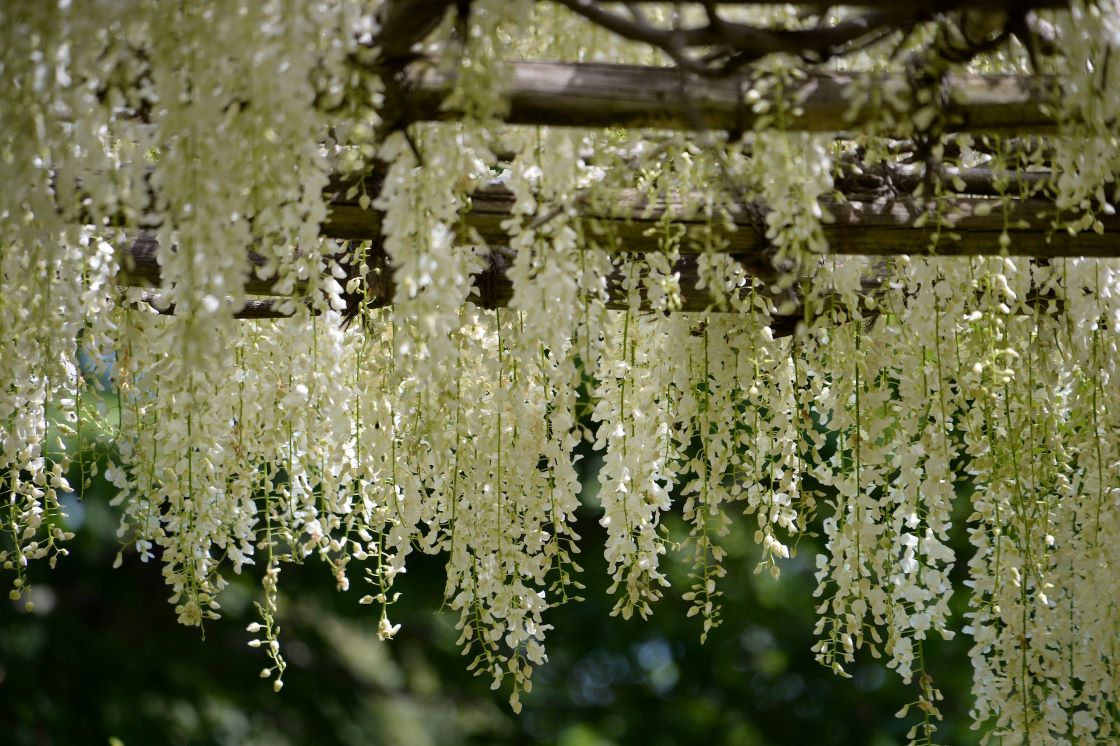
Can you grow Wisteria in pots?
Wisteria can be grown in pots, but they need a little more care and attention.
You’ll need to train your wisteria as a standard (a small tree) and feed it regularly. Choose the largest pot you have space for and fill it with tree and shrub compost, then plant your wisteria at the same level it was in the original pot and give it plenty of water.
The best Wisteria for pots are Wisteria brachybotrys, Wisteria floribunda or Wisteria sinensis - Lavender Lace is a particularly good choice for training as a tree.

Can you grow Wisteria in shade?
The best wisteria for partial shade is Wisteria Sinensis. This is one of a few Wisteria varieties which can take a little less sun, but even this needs around six hours of light each day to flower at its best. Most wisteria varieties need more than this to achieve their full blooming potential and no wisteria will thrive in full shade. If you need a climbing plant for a shady spot, check out this list.
Which Wisteria flowers soonest?
Wisteria sinensis produces flowers sooner than other types. Any wisteria can take around 3-4 years before it flowers, but there are some things you can do to help it along.
- Buy a grafted wisteria (all of ours are). Plants raised from seed typically take 10-20 years to flower, which is a long time for even the most patient gardener. Grafted plants will produce flowers much, much sooner
- Prune your wisteria. Flowers don’t grow on old wood, so make sure you prune that out every year. Check out our guide here.
- Water your wisteria well. The following year’s buds are formed between July and September, so make sure your plant gets enough water throughout those months.
Ultimately, with possibly the most impressive flowers of any climbing plant, this is one that’s worth waiting for!

For more on how to grow wisteria including pruning and training, see our care guide.





